|
|
|
|
Fast Streaming Local Time-frequency Transform for Nonstationary Seismic Data Processing |
Next: Discussion Up: Applications Previous: Fast Inverse-Q Filtering in
Multicomponent seismic data registration is an important step before
quantitative seismic data interpretation and joint amplitude versus
offset (AVO) analysis (Lu et al., 2015; Gao and Sacchi, 2018). The time-frequency
transform is suitable for nonstationary registration of multicomponent
images in frequency domain (Liu and Fomel, 2013; Chen, 2021). The main idea is
to match the spectra of compressional (PP) and shear (SS) reflections
to that of Ricker wavelets, making the balanced PP and SS images share
a similar spectral content. Then one can squeeze the SS image and make
PP and SS images display in the same coordinate
system. Fig.13a and 13b shows the PP and
SS images from a nine-component land survey, respectively. The
interleaved image (where the PP and SS traces are interleaved one by
one) of the raw PP and PS data shows the obviously discontinuous
reflectors (see Fig.14a). We use the LTF
decomposition as a reference comparison with the proposed SLTFT
method. Fig.14b and 15 shows the
interleaved images after the registration by using the LTF
decompostion and the SLTFT (
 ), respectively. Both
the LTF decomposition and the SLTFT method create the results with
spatially coherent registration and high resolution, especially at the
locations of the rectangle boxes. In terms of computational cost, the
proposed method provides a more efficient time-frequency
representation (see Table. 2), which makes it more
suitable in high-dimensional field data processing tasks.
), respectively. Both
the LTF decomposition and the SLTFT method create the results with
spatially coherent registration and high resolution, especially at the
locations of the rectangle boxes. In terms of computational cost, the
proposed method provides a more efficient time-frequency
representation (see Table. 2), which makes it more
suitable in high-dimensional field data processing tasks.
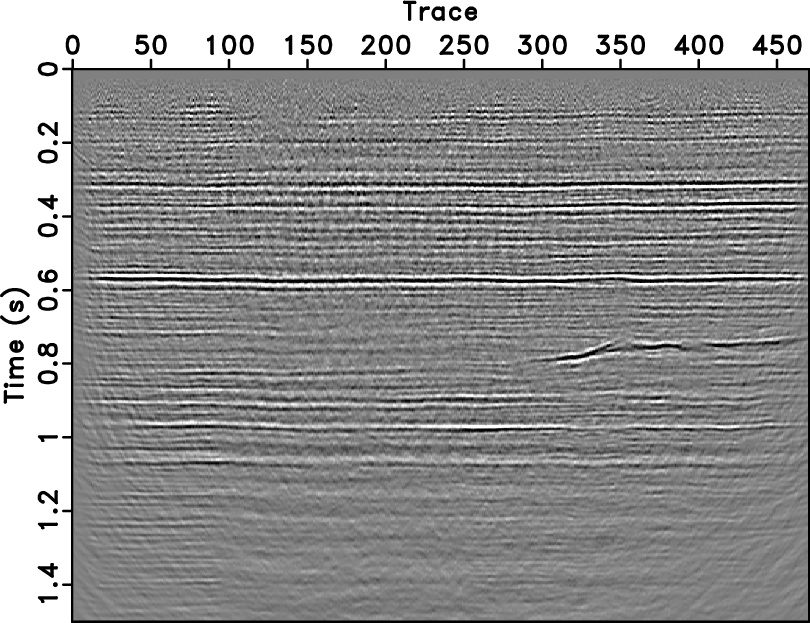
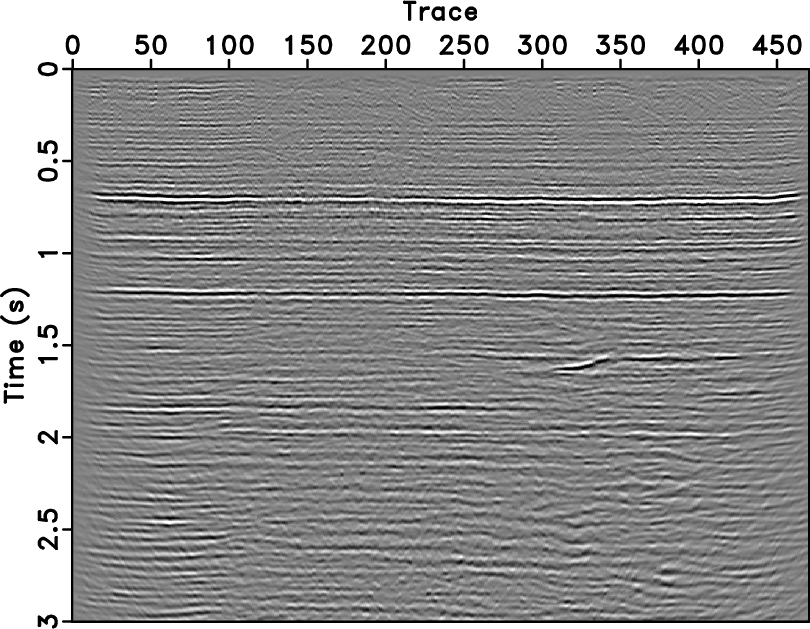
|
|---|
|
pp,ss
Figure 13. (a) PP and (b) SS images from a multicomponent land survey. |
|
|
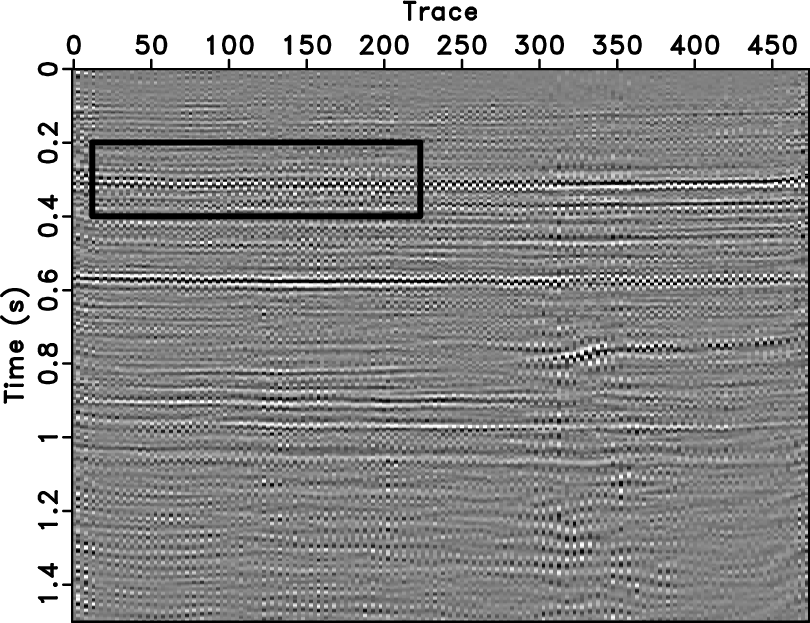
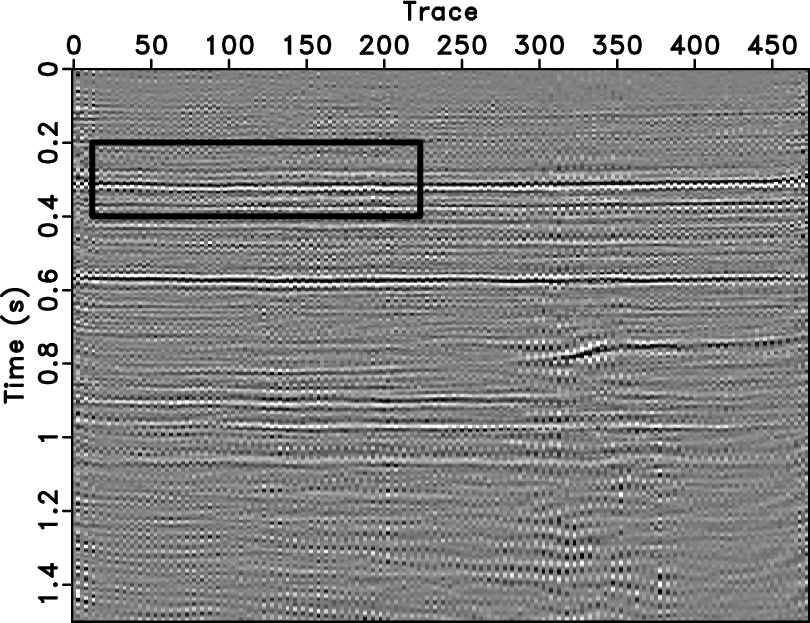
|
|---|
|
before,after
Figure 14. The interleaved image of (a) raw data, after registration by using (b) LTF decomposition. |
|
|
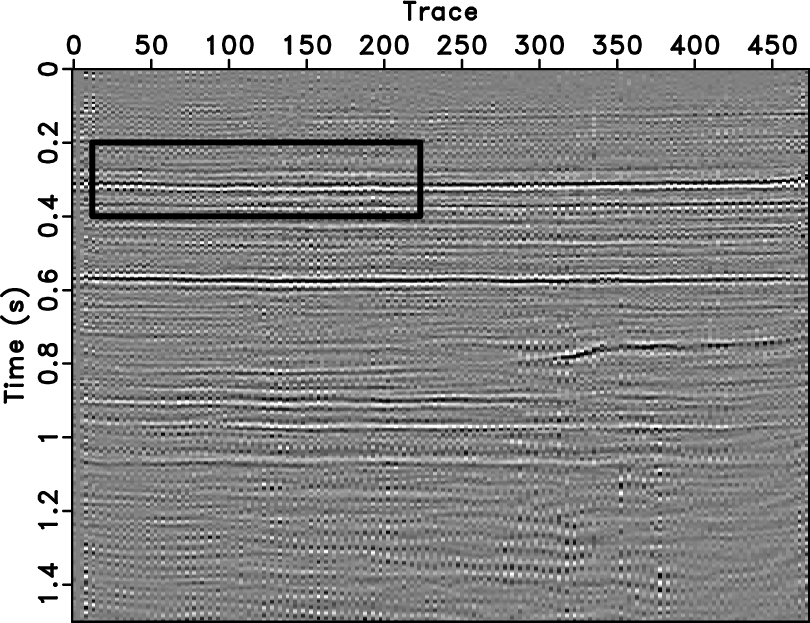
|
|---|
|
after1
Figure 15. The interleaved image after registration by using SLTFT. |
|
|